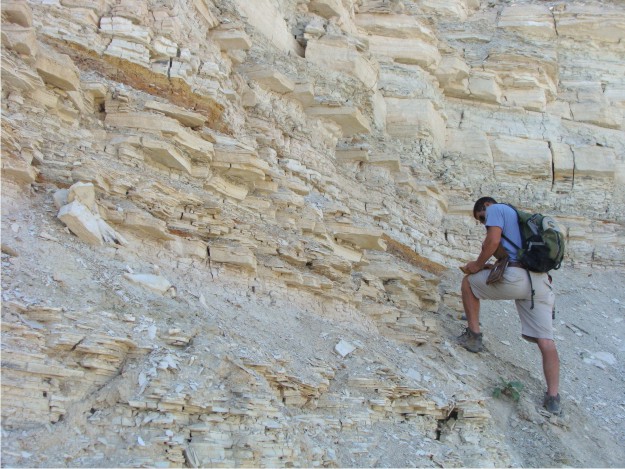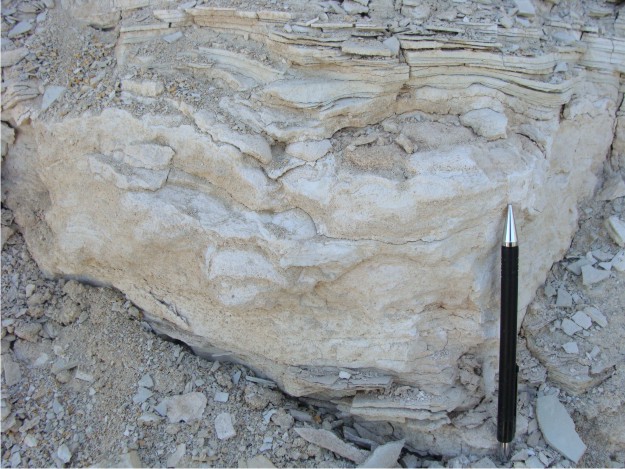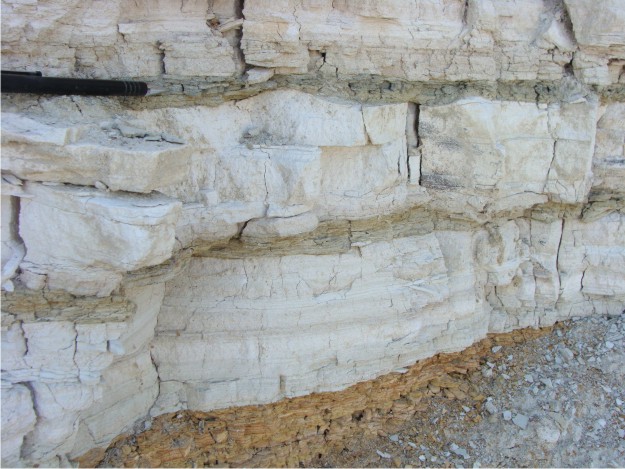Black Hill, north of Ephraim, Utah. Research Day 12 (July 21).
Today was our last day collecting data in the Green River Formation, so we ended it by visiting one of the larger quarries in the area. Shortly after arriving at the quarry, though, Bill stumbled upon a baby rattlesnake, and it was angry, curled up and rattling under a small wackestone ledge. Bill couldn’t quite leave it alone the entire time we were at the quarry. This rattlesnake only added to the “wildlife” list that we saw in central Utah while hiking through the Green River Formation. It seemed like each day numerous Black Widow spiders were seen, and some of them were fairly large. In addition to rattlesnakes and Black Widows, we were treated to cottontail rabbits, deer, elk, ground squirrels, swarms of “Mormon crickets” (migratory grasshoppers), red harvester ants, and a rare fox sighting in the middle of one afternoon.

Phil turned out to be a "stratigraphic column machine", and here is completing a stratigraphic column through one portion of the largest quarry on Black Hill.

The Black Hill quarry proved interesting, because it was unlike its northerly counterpart on White Hill. For example, the stromatolites here are much smaller than those that we observed on White Hill. Our initial assumption is that the Black Hill quarry is stratigraphically younger than most of the quarries on White Hill.

One feature that remained a constant within the Green River Formation was the presence of iron-rich layers that were used in correlation. On Black Hill, these iron-rich layers were more numerous and sometimes thicker.


